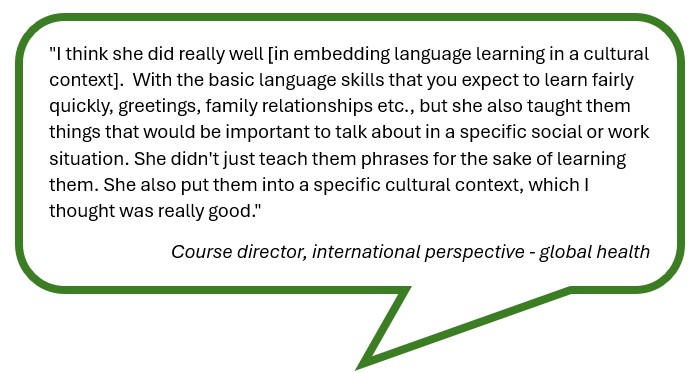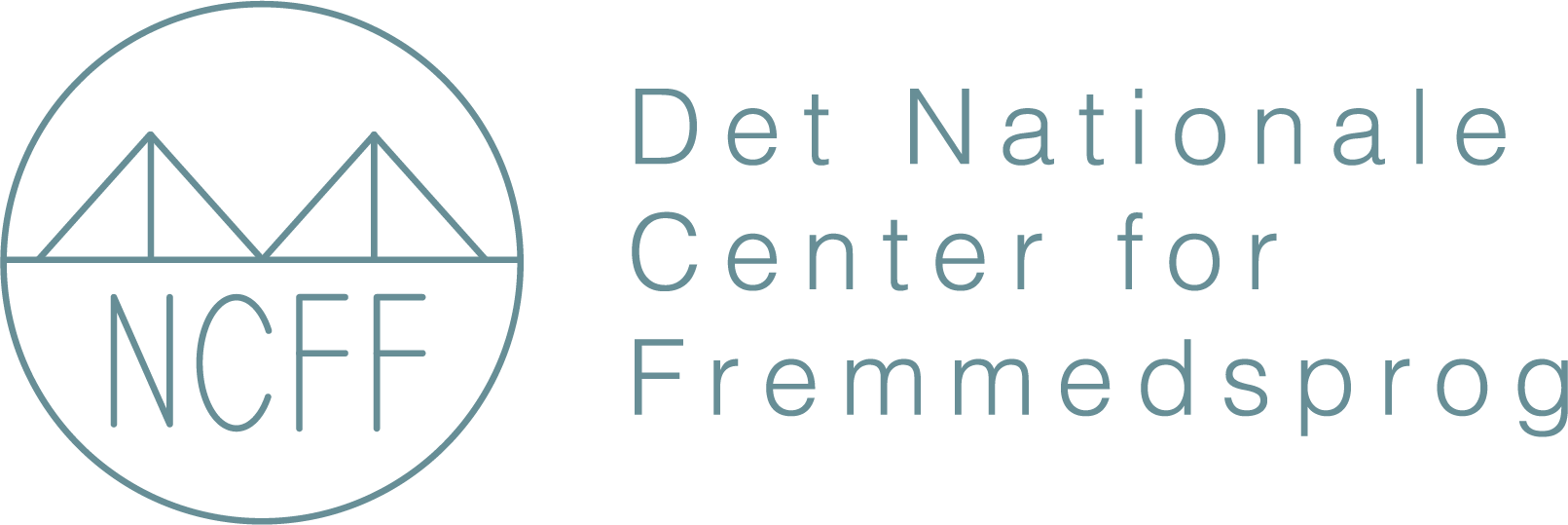Developing and teaching language as an additional competence
Depending on the results of the needs assessment, the work of developing and delivering language learning as an additional competence will take different forms.
In all the cases in the MUST project, tailor-made solutions had to be found for developing the different language training courses. The case of English for students at KP who were going to study or do internships abroad involved a collaboration between teachers and students from the English department on the teacher training programme, while all the other cases required collaboration between specialists and linguists with different profiles. Finding language teachers with the right profile to develop appropriate language courses and/or provide language training was more challenging in some cases than others. While the case focusing on English for biology students at KP involved a collaboration between biology and English teachers internally at KP, other institutions had to look outside their immediate institutions to find language teachers with the relevant background and interest to participate in the project.
For the Spanish course for medical students at UCPH, we needed a language teacher who was familiar with Latin American language and culture and who could organise and teach Spanish to medical students with limited or no previous knowledge of Spanish. An experienced high school teacher of Spanish designed and taught the language lessons, regularly discussing content and class activities with the Public Health course director. This collaboration was crucial in ensuring that the Spanish lessons could be placed in the right academic and cultural context and meet the students' communicative needs for learning Spanish for an elective course that included field visits in Mexico.
 In the case of French for the law programme, the course director wanted to involve a teacher from the French programme, partly to ensure linguistic expertise and partly to create a basis for interdisciplinary collaboration in the future. As this was not possible (see the description of Case 1 in the accompanying material), the course director instead drew on the linguistic expertise of French-speaking teachers from LAW and a number of external lecturers, including an experienced translator/interpreter specialising in French property law and legal linguists from the European Court of Justice in Luxembourg, who are key employers of lawyers with French as an additional competence. The external lecturers’ contributions were closely rooted in practice, informing both the course content and the learning activities as well as offering diverse approaches to teaching. Students responded positively to both the close links to practice as well as the diversity in teaching styles that this afforded.
In the case of French for the law programme, the course director wanted to involve a teacher from the French programme, partly to ensure linguistic expertise and partly to create a basis for interdisciplinary collaboration in the future. As this was not possible (see the description of Case 1 in the accompanying material), the course director instead drew on the linguistic expertise of French-speaking teachers from LAW and a number of external lecturers, including an experienced translator/interpreter specialising in French property law and legal linguists from the European Court of Justice in Luxembourg, who are key employers of lawyers with French as an additional competence. The external lecturers’ contributions were closely rooted in practice, informing both the course content and the learning activities as well as offering diverse approaches to teaching. Students responded positively to both the close links to practice as well as the diversity in teaching styles that this afforded.
The experiences from these cases show that different approaches are required to meet the different student needs and to accommodate the available institutional resources.
Funded by
Models for teaching language as an additional competence was funded by The National Centre for Foreign Languages.
The project was co-funded by the Centre for Internationalisation and Parallel Language Use.
Period: January 2020 until December 2023

